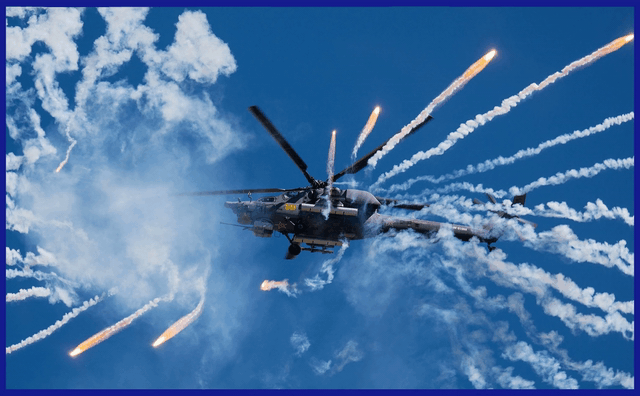Stepping into the realm of modern warfare machines, Let Us Explore The Firepower Of The Mi-28 Havoc Chopper, also known as the “Night Hunter.” This Russian all-weather, day-night, military tandem, two-seat anti-armour attack helicopter stands as a testament to its incredible capabilities. Showcasing an array of impressive armaments, including a 30mm cannon, guided missiles, rocket pods, and air-to-ground missiles, the Mi-28 demonstrates its versatility in engaging a wide range of ground and aerial targets.
Bolstered by advanced avionics, robust defensive systems, and an unwavering focus on crew survivability, the Havoc serves as a pivotal asset in anti-armour operations and close air support missions. As of 2023, it proudly holds the distinction of being the most advanced version of an attack military helicopter in the world.
The Mi-28NE is specifically designed for continuous operations, day and night, to locate and engage enemy personnel, and armoured and non-armoured vehicles both on the front line and in strategic depths. Its purpose extends to eliminating low-speed aerial threats and offering cover and fire support for tactical airborne troops. The helicopter boasts exceptional survivability in aerial combat, owing to its effective armour protection of critical systems and components. Equipped with an ECM system, it offers reliable defence against portable surface-to-air missiles with multi-spectrum thermal homing warheads. Furthermore, the Mi-28NE exhibits remarkable versatility in various environments, including mountainous regions, hot climates, and high humidity. It further demonstrates its ability to land on unpaved surfaces at altitudes reaching up to 4,000 meters.

Delving Into The Origins Of The Mil Mi-28 Havoc
The origins of the Mil Mi-28 Havoc can be traced back to the 1970s in the Soviet Union. The development was initiated as a response to the growing need for a dedicated anti-armour attack helicopter to counter the threat posed by armoured vehicles on the modern battlefield.
After the successful completion of the Mil Mi-24, the focus shifted towards creating a distinct attack helicopter with transport capabilities. The new design incorporated a reduced transport capacity, accommodating 3 troops instead of 8, and removed the cabin to optimize overall performance and increase top speed. Enhanced performance was of utmost importance to fulfil its intended role in engaging tanks, and enemy helicopters, and supporting helicopter landing operations.
In 1972, the Soviet government launched a design competition for a new attack helicopter tailored to fulfil the anti-armour role. The competition involved two prominent Soviet helicopter design bureaus: Mil and Kamov. Mil presented their design, the Mi-28, while Kamov proposed the Ka-50. Design work on the Mi-28 began under the leadership of Marat Tishchenko in 1980. By 1981, the design and a mock-up were approved, leading to the maiden flight of the first prototype on November 10, 1982.
The second prototype was completed in 1983. In 1984, the Mi-28 successfully concluded the initial phase of state trials. However, in October 1984, the Soviet Air Force opted for the more advanced Kamov Ka-50 as their new anti-tank helicopter. Nevertheless, the development of the Mi-28 continued, albeit with lower priority. Finally, in December 1987, after a thorough evaluation process, the design submitted by the Mil Design Bureau, led by chief designer Mikhail Mil, was selected as the winner. Mil’s design showcased the necessary features and capabilities to meet the anti-armour requirements set by the Soviet military. Mi-28 production received official approval at Rosvertol in Rostov-on-Don.
The Mi-28 entered service with the Russian military in 2009, after a lengthy development and testing period. The initial operational version was designated as the Mi-28N, and it was the result of several iterations and improvements made to the helicopter’s design based on feedback from test flights and user evaluations.
Since its introduction, the Mi-28 Havoc has undergone further refinements and updates to enhance its capabilities and address operational feedback. It has seen active service in various conflicts and continues to serve as a key attack helicopter in the Russian military.

The Development of The Mil Mi-28 Havoc
In January 1988, the inaugural flight of the first Mi-28A prototype took place, featuring more potent engines and an “X” type tail rotor as an alternative to the previous three-blade version. The Mi-28A made its highly anticipated debut at the Paris Air Show in June 1989. Another significant milestone was achieved in 1991 with the completion of the second Mi-28A. However, the Mi-28A program encountered a setback in 1993 when it was discontinued due to its perceived lack of competitiveness compared to the Ka-50, particularly regarding all-weather capabilities.
In 1995, the unveiling of the Mi-28N referred to as the “Night” version, took place. On November 14, 1996, the prototype of the Mi-28N embarked on its maiden flight. The most prominent distinguishing feature of the Mi-28N is its radar system, enclosed in a rounded cover positioned above the main rotor, reminiscent of the renowned American AH-64D Apache Longbow. Additionally, the Mi-28N showcases improved forward-looking infrared ( FLIR ) capabilities and an aiming device located beneath the nose, which incorporates a TV camera. Despite facing challenges related to funding, the development of the Mi-28N persevered. In March 2004, a second prototype showcasing an enhanced rotor design was unveiled at Rosvertol.
The Army received the first serial Mi-28N on June 5, 2006, marking an important milestone. The procurement plan targeted the acquisition of 67 Mi-28Ns by 2015, intending to fully replace the Mi-24. Over the period of 2012 to 2014, the Rostvertol plant successfully delivered around 140 Mi-28N and Mi-35M helicopters to customers both within and outside the country. In 2015, an additional 28 helicopters were delivered, further expanding the fleet. Mil, the manufacturer, also developed an export version of the Mi-28N called the Mi-28NE, as well as a simplified day helicopter variant known as the Mi-28D. While the Mi-28D was based on the Mi-28N design, it lacked radar and FLIR capabilities.
Since 2008, substantial efforts have been dedicated to the development of a fifth-generation derivative known as the Mi-28NM. This modernized helicopter has been designed to meet a range of criteria, including a low-radar signature, extended flight range, advanced weapons control system, select capabilities resembling those of a fighter jet, and a maximum speed of up to 600 km/h. Notably, in 2016, Russian media reported on the ongoing development of an advanced helmet system specifically designed to enhance the precise targeting capabilities of the MI-28N through the display of visual information.
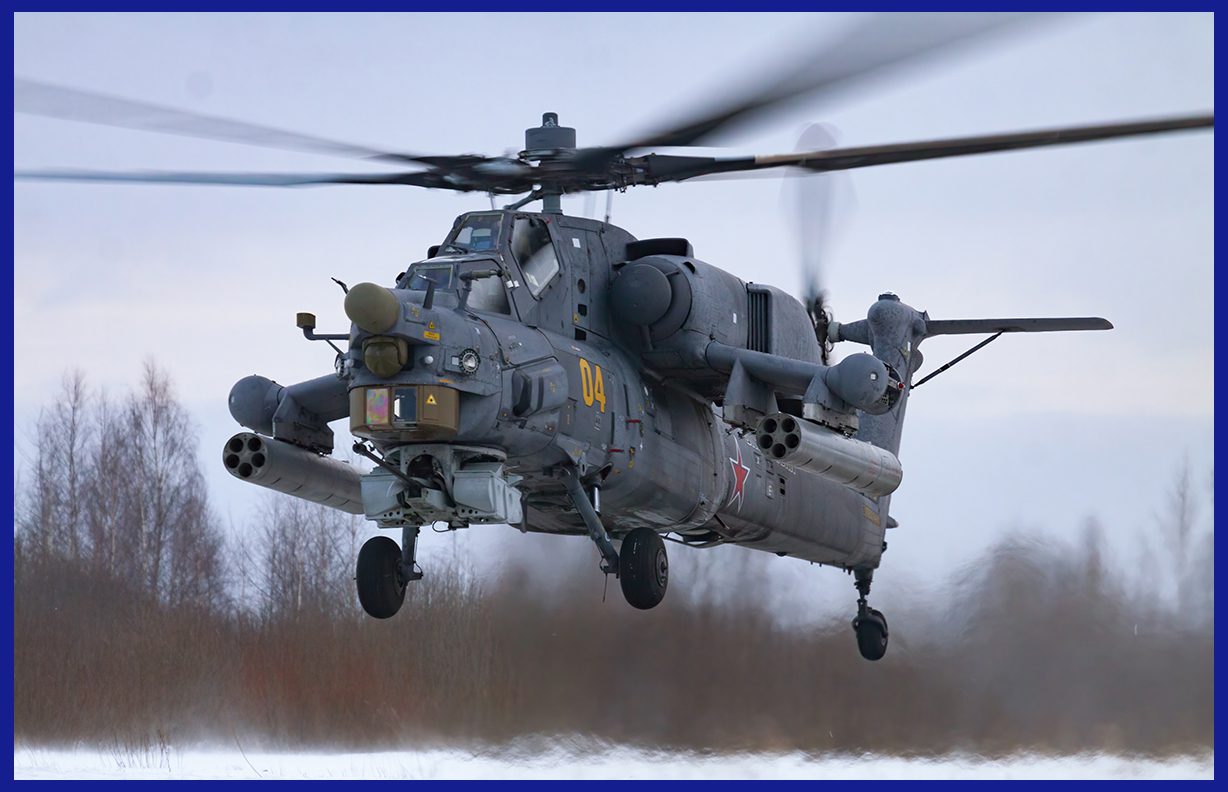
The Analysis of the Mi-28 Havoc Design
The Mi-28 Havoc features a design that prioritizes its role as an attack helicopter, with a focus on anti-armour operations and close air support.
Airframe and Layout: The Mi-28 is an advanced attack helicopter designed to serve as an effective air-to-air and air-to-ground companion to the Mi-24 Hind and Ka-50 Hokum. Positioned above the midsection of the body, it features a five-blade main rotor, while its rear is equipped with short, wide, tapered wings designed for carrying weapons. The helicopter is powered by two turboshaft engines mounted in pods along the top of the fuselage, featuring downturned exhausts.
With a slender fuselage that tapers towards the tail boom and nose, the Mi-28 incorporates tandem, stepped-up cockpits, a belly-mounted cannon, and a non-retractable tricycle tail-wheel landing gear. The crew benefits from the presence of energy-absorbing landing gear and seats, allowing them to withstand vertical falls at speeds of up to 12 m/s. Moreover, the Mi-28 boasts a fully armoured cabin, including the windshield, which provides protection against armour-piercing bullets measuring 7.62 and 12.7 mm, as well as 20 mm shell fragments.
In terms of design, the Mi-28 adheres to a conventional pod and boom configuration, featuring a tail rotor for stability. Its main rotor head is equipped with elastomeric bearings, while the main rotor blades are constructed using composite materials. The tail rotor incorporates a biplane configuration, housing independently controlled X-shaped blades. Notably, the Mi-28N night attack variant is equipped with all-plastic rotor blades capable of withstanding the impact of 30 mm shells.
Cockpit and Avionics: The Mi-28 is equipped with two heavily armoured cockpits, ensuring the safety of its crew. The windshield of the helicopter is built to withstand bullets ranging from 12.7 to 14.5 mm calibre. It features in-nose electronics and a narrow-X tail rotor with reduced noise characteristics, operating at a 55-degree angle. The power for the Mi-28 is generated by two Isotov TV-3-117VM turboshaft engines, each delivering 2,200 horsepower. Although the primary role of the Mi-28 is not intended for transport purposes, it does include a small passenger compartment capable of accommodating up to three individuals. This compartment is primarily intended for the rescue of downed helicopter crews.
The Mi-28N variant introduces a helmet-mounted display for the pilot, providing enhanced situational awareness. The pilot can designate targets using the display, allowing the navigator/weapons officer to effectively engage the designated targets using the appropriate weaponry. The integrated surveillance and fire control system of the Mi-28N comprises two optical channels that offer both wide and narrow fields of view. Additionally, the system incorporates a narrow-field-of-view optical television channel and a laser rangefinder. With a flexible range of movement, the system can operate within a 110-degree azimuth and a vertical range from +13 to -40 degrees in terms of elevation.
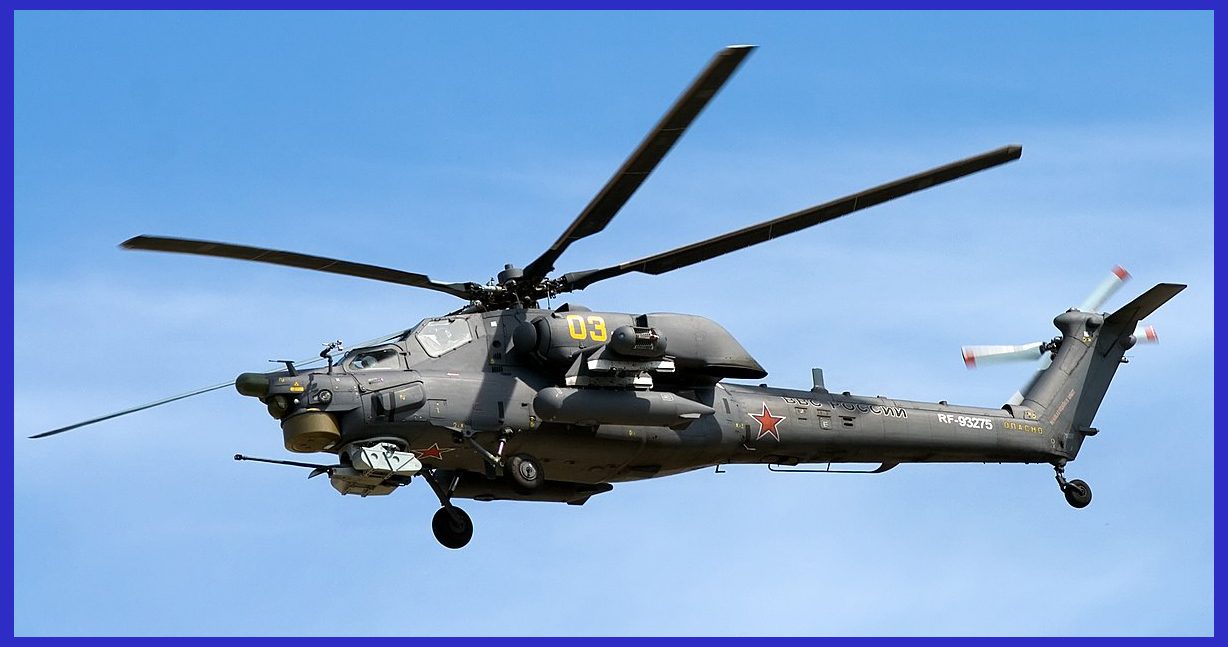
Night Operations Capability: The Mi-28 is specifically designed for night operations and low-light conditions, earning it the nickname “Night Hunter.” It is equipped with advanced night vision and infrared systems, allowing for effective combat operations in darkness. The cockpit and weapon systems are optimized for night vision, enabling pilots to engage targets with precision.
The Mi-28 helicopter employs a helmet-mounted target designator, which enables the pilot to effectively designate targets. Once a target is designated, it is then assigned to the navigator’s surveillance and fire control system. This allows the weapons officer to engage the target using guided weapons or guns. The targeting system operates in perfect synchronization with the pilot’s line of sight, ensuring precise acquisition and engagement of targets.
In addition, Russia’s military rotary-wing helicopter fleet has recently undergone a comprehensive upgrade by integrating state-of-the-art night vision goggles ( NVG ). This significant enhancement provides pilots with improved night vision capabilities, thereby enabling them to operate with greater effectiveness and safety in low-light environments. The integration of NVG technology represents a significant boost to the overall operational readiness of Russia’s rotary-wing aircraft fleet.
Armament and Weapon Systems: The Mi-28 helicopter is equipped with a chin-mounted NPPU-28 turret that houses a 30 mm automatic Shipunov 2A42 autocannon. This autocannon has selective fire capability and a dual-feed system, allowing for a cyclic rate of fire that ranges from 200 to 800 rounds per minute. The effective range of the autocannon varies depending on the type of target, with a range of 1,500 meters for ground vehicles and 2,500 meters for airborne targets.
As for missile armament, the standard configuration of the Mi-28N includes the supersonic 9M120 Ataka-V missile, which utilizes radio beam-riding guidance. The helicopter has the capacity to carry 16 Ataka missiles, with two racks capable of holding 8 missiles each. However, it is more common for the Mi-28N to carry 8 Ataka missiles. The Ataka missile comes in four different variants, each designed for specific tasks.
The 9M120 Tandem High Explosive Anti-Tank ( HEAT ) warhead variant is specifically designed for engaging tanks equipped with Explosive Reactive Armor ( ERA ) and is capable of penetrating up to 800 mm of Rolled Homogeneous Armor ( RHA ). The 9M120F thermobaric variant is intended for engaging infantry, buildings, bunkers, and caves. The 9M120O expanding rod warhead variant is used for engaging helicopters. All of these variants have a maximum range of 6 km. In addition, an improved version of the missile known as the 9M120M offers extended range capabilities, reaching up to 8 km, and enhanced penetration capability of up to 900 mm of RHA.
Unguided weapons, such as rockets, can be mounted on four pylons located under the stub wings, including the S-8 and S-13 rockets. Currently, the Russian Aerospace Forces are undergoing an upgrade process for their S-8 and S-13 rockets, converting them into laser-guided missiles using the proposed Ugroza (“Menace”) system. The upgraded rockets, designated as S-8Kor and S-13Kor, respectively, have been modified under the Ugroza program.
In addition to rockets, the Mi-28 is capable of carrying other types of guided munitions. It can be equipped with IR-guided R-73 air-to-air missiles, Kh-25 air-to-surface missiles, as well as KAB 500 kg laser-guided bombs. These weapons expand the helicopter’s capabilities for engaging both aerial and ground targets with precision.
Overall, the Mi-28 Havoc’s design reflects its role as an agile and heavily armed attack helicopter. Its layout, avionics, weapon systems, and survivability features are optimized to provide effective anti-armour capabilities, close air support, and night operations capability on the modern battlefield.
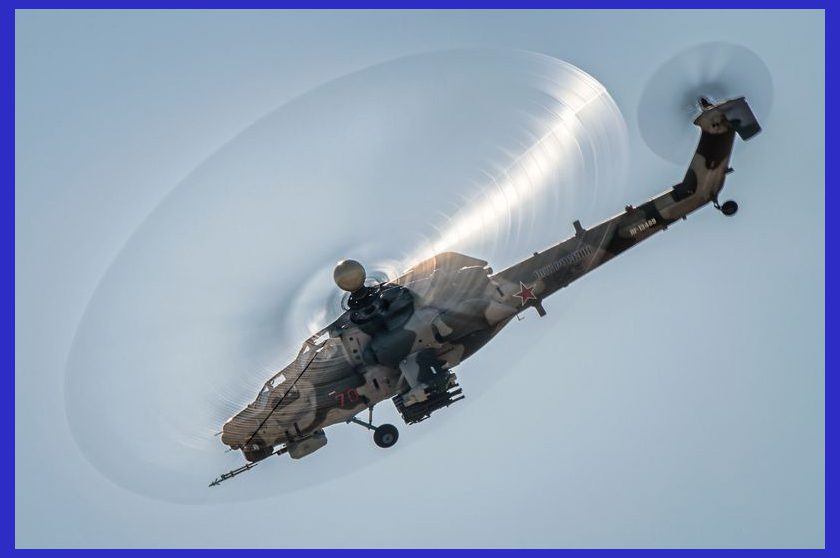
Variants Of The Mi-28 Havoc Helicopter
The Mi-28 Havoc encompasses several variants and specialized versions, each designed to meet specific operational requirements.
Mi-28A: Serving as the original prototype, the Mi-28A featured a tandem seating arrangement and served as the foundation for further development.
Mi-28D: Derived from the Mi-28A prototype, the Mi-28D is an upgraded variant optimized for daylight operations. It shares similarities with the Mi-28N but lacks the top-mounted radar and FLIR capabilities. The Mi-28D incorporates various enhancements, including improved avionics, enhanced armour protection, and increased fuel capacity.
Mi-28N ( Mi-28NE for export ): The Mi-28N is the production version that was introduced into service with the Russian military in 2009. It boasts upgraded avionics, advanced night vision capabilities, and enhanced weapon systems. The Mi-28NE is an export variant based on the Mi-28N, tailored to fulfil the requirements of international customers.
The Mi-28N is currently in service with the Iraqi, Uganda and Algerian Air Forces. In August 2018, Russian Helicopters unveiled an upgraded variant known as the Mi-28NE, featuring improvements in the main rotor system, engine unit, and onboard radio-electronic equipment. This variant includes enhanced armour and is equipped with modern directional IR countermeasures ( DIRCM ) to counter short-range IR-guided missiles. The rotor blades, made of composite materials, have the capability to withstand shells of up to 20–30 mm, while the fuel system has been designed to be fire and explosion resistant.
Mi-28UB: The Mi-28UB is a training variant of the Mi-28, designed for pilot and crew training. It features dual controls and allows for training in both piloting and weapon systems operations.
Mi-28NM: The Mi-28NM, also known as the Night Superhunter, is an advanced modernization of the Mi-28N variant. It incorporates various upgrades, including improved avionics, new radar systems, enhanced engines, and advanced weaponry. The helicopter has undergone a nose redesign that involves the removal of the nose antenna and the introduction of a new radar station, resulting in a substantial improvement in all-around visibility. Equipped with more powerful VK-2500P engines featuring Full Authority Digital Engine Control ( FADEC ) technology, as well as improved rotor blades, the Mi-28NM achieves an impressive 13% increase in maximum speed and a 10% increase in cruise speed.
In October 2016, the Mi-28NM successfully completed its inaugural flight, followed by the completion of state trials for the upgraded VK-2500P engines in October 2020. An official plan has been approved for upgrading the existing Mi-28N helicopters in the Russian fleet to the Mi-28NM standard. The primary objective of the Mi-28NM is to enhance combat capabilities and significantly improve situational awareness, thereby augmenting its effectiveness across a wide range of operational scenarios.
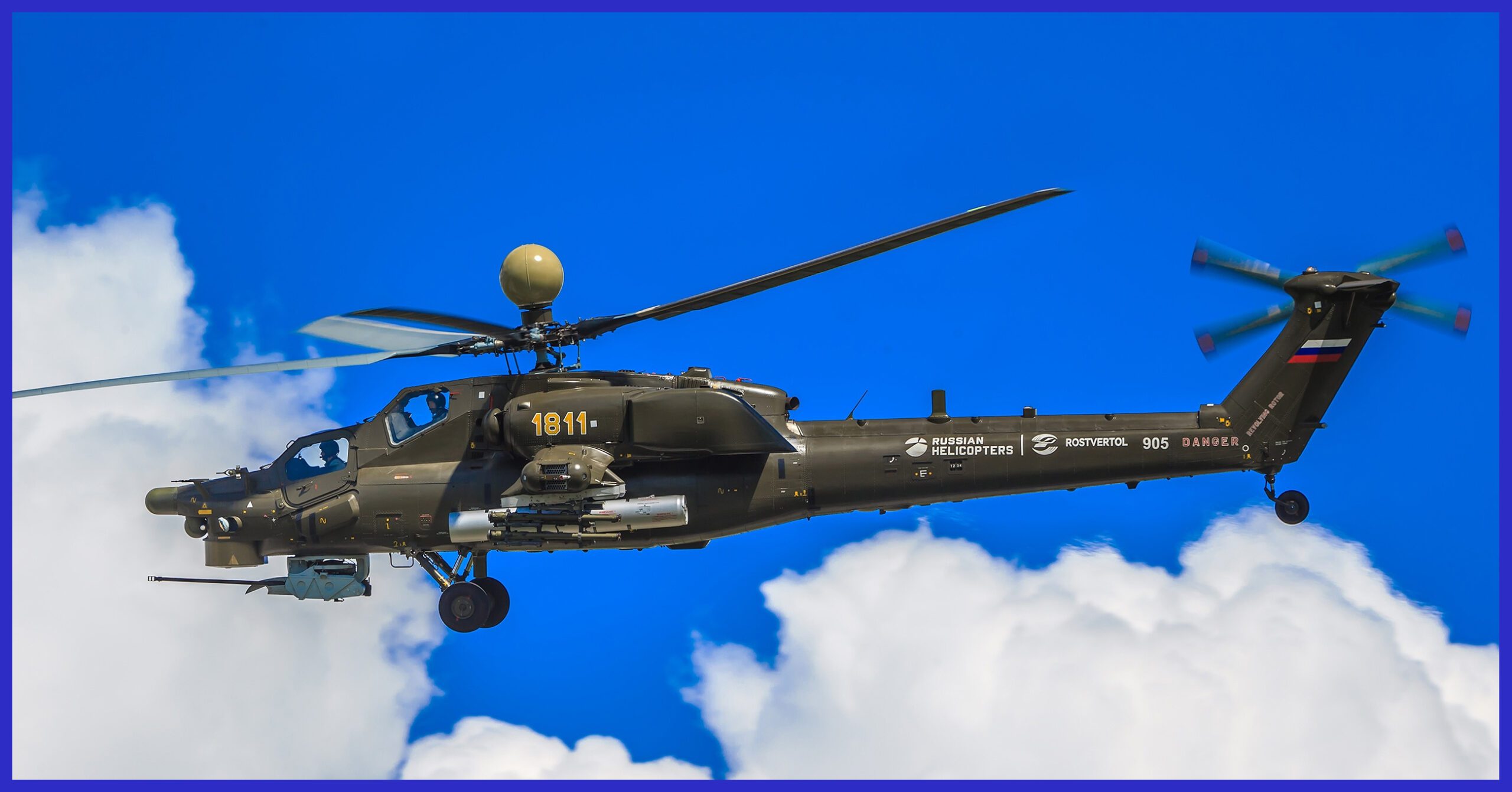
Operational History Of Mi-28 Havoc
Russian military action in Syria: During the Russian military intervention in the Syrian civil war, the Mi-28N helicopters had their first combat experience in the 2016 Battle of Palmyra. Throughout the battle, numerous Mi-28Ns from the Russian Aerospace Forces were deployed to assist the Syrian Arab Army ( SAA ) in their advancement towards the city. Working in conjunction with the SAA, the Mi-28Ns effectively engaged a variety of Islamic State positions by employing a combination of S-8 unguided rockets and 9M120 Ataka anti-tank guided missiles. These accurately executed attacks played a crucial role in targeting and neutralizing enemy positions throughout the course of the battle.
Russian military action in Ukraine in 2022: The Mi-28N was deployed by Russia during the 2022 invasion of Ukraine. According to The Times, Ukrainian forces successfully utilized a UK-made Starstreak system to shoot down a Russian Mi-28N attack helicopter in early April. On 26 April, Ukrainian forces discovered the wreckage of a Mi-28 outside the town of Hostomel in the Kyiv region. It is believed that the helicopter was destroyed during the battle for Hostomel airport. The intense battle, which continues as of June 2023, has resulted in heavy casualties for both sides.
Technical Specifications Of The Mil Mi-28N Havoc
- Crew: 2 ( pilot & weapon system officer )
- Length: 55 ft 10 in ( 17 m ) without rotors
- Height: 12 ft 6 in ( 3.82 m )
- Wingspan: 16 ft ( 4.88 m )
- Empty Weight: 8,590 kg ( 18,938 lb )
- Gross Weight: 10,700 kg ( 23,589 lb )
- Power plant: 2 × Klimov TV3-117 turboshaft engines, 1,636 kW ( 2,194 hp ) each
- Main rotor diameter: 56 ft 5 in ( 17.2 m )
- Main rotor area: 2,501.0 sq ft ( 232.35 m2 )
- Maximum Speed: 320 km/h ( 200 mph )
- Average Cruise speed: 270 km/h ( 170 mph )
- Ferry Range: 1,100 km ( 680 mi ) 4x drop tanks with 5% reserve
- Combat range: 200 km ( 120 mi )
- Service ceiling: 18,700 ft ( 5,700 m )
- Rate of climb: 2,400 ft/min ( 12 m/s )
- g limits: +3 / -0.5
- Armament: 1× chin-mounted 30 mm Shipunov 2A42 cannon with 250 rounds, a Total of Four Hardpoints: Two pylons under each stub wing to mount bombs, rockets, missiles, and gun pods. with a capacity of 2,000 kg, and provisions to carry combinations of, S-8 and S-13 Rockets, Ataka-V, 9K121 Vikhr, and 9M123 Khrizantema
Anti-tank missiles and two 23 mm UPK-23-250 gun pods each containing a GSh-23L with 250 rounds.
R-60, R-73, Igla-V Air-to-Air Missile / LMUR, Kh-29 Air-to-Surface missile / KAB-500Kr Bombs and mine dispensers
Moreover, do not miss the exclusive opportunity to acquire an exquisite, large-scale 1/72 premium diecast model of the formidable Su-57, Su-30MKI, Su-34, and MiG-29 fighter jets. These remarkable aircraft are now conveniently available on Air Models. Click here to access these exceptional models. Renowned for their devastating capabilities in combat, these fighter jets showcase the pinnacle of modern aerial warfare technology.
In conclusion, the Mi-28 Havoc attack helicopter has evolved through various variants and specialized versions to become a formidable platform for anti-armour operations and close air support. Its design combines advanced avionics, powerful weaponry, and enhanced survivability features, enabling it to excel in combat scenarios. With a specific emphasis on night operations, advanced targeting systems, and a wide range of armaments, the Mi-28 Havoc remains a crucial asset in modern warfare. Whether engaging armoured vehicles or providing air support to ground troops, the Mi-28 Havoc showcases its prowess as a versatile and powerful attack helicopter.
Important Announcement for Our Valued Readers!
After an article is published, it is possible that updates or changes may have occurred beyond the time of publication. Therefore, it is important to be aware that certain information in the article might be outdated. To ensure the most accurate analysis, it is highly recommended to verify the content with the latest sources available.
However, we are dedicated to delivering outstanding articles on military products and global updates. Maintaining quality and smooth operation requires resources. Your support sustains our efforts in providing insightful content. By purchasing high-quality products through our affiliated links, you help us keep our platform alive and acquire top-notch items. Your unwavering support is invaluable and inspires us to strive further.
We welcome your suggestions and requests for more information, as we value feedback from our readers. If there’s specific defence material or equipment not covered on our site, please share your request in the comments. We’ll strive to research and provide the required information. We sincerely thank you for your unwavering interest in our website, and we eagerly anticipate hearing from you! Enjoy your reading experience!
